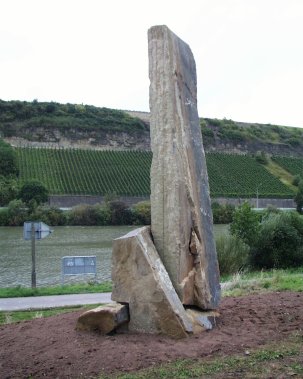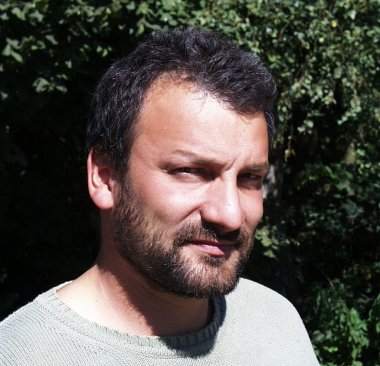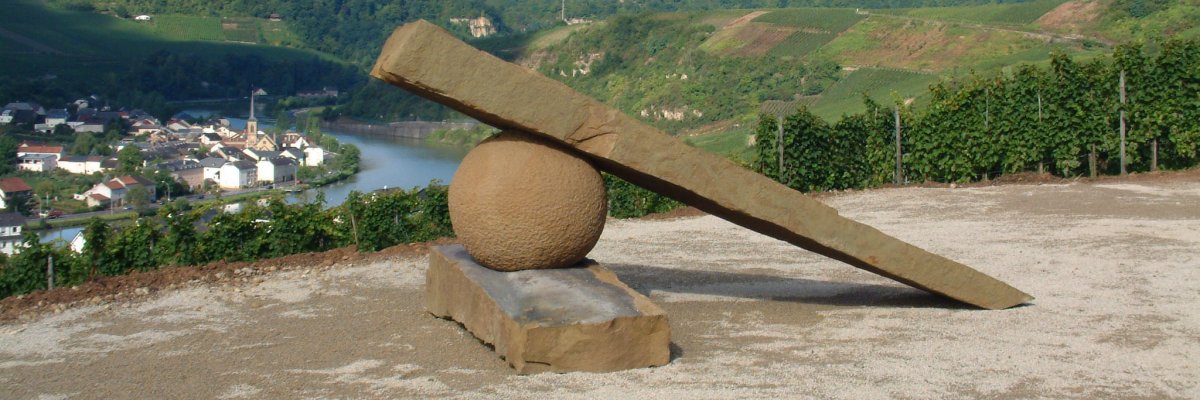"Prière de toucher"
by Francois Weil
 | The artist about his work: La pierre a l'état brut, le sol, dénudé par endroit, les carrières. |

The end: Stones by the River by Dr. Baerbel Schulte
Standing in sight of the "Heaven's Ladder". Francois Weil s kinetic work "Prière de toucher". Touching them makes them move, as if the natural weight weren't there at all. Like Hartwig Mülleitner's "Knee with Joint", this work eludes clear assignment to "sculpture" or "plastic". It moves on the border between, because basically it connects both together. The artist respects the stone as a naturally grown material as something already so perfect in itself that he largely leaves it in its natural state and only changes it with minimal interventions. That's the sculptural part. The plastic part is that he brings this stone into a dialogue with another material, namely iron or steel. As part of this dialogue with a man-made material, according to Weil, one can learn to understand this unknown matter. The metal often acts like a steel backbone or a rail to which the individual stones are attached. If we follow an approach by Joseph Beuys, who sees all of humanity as a single "social sculpture", then it is also about the relationship between part and whole: the stones have been broken out of a natural whole and cannot be returned there, so they remain the fracture surfaces between the bedrock and the workpiece are unsmoothed. In isolation we experience the loss of the original wholeness - analogous to the problem of the individual in the community. But we also experience the emergence of a completely new whole through the totality of the individual parts. Man-made metal serves as a mediator for this. "Prière de toucher!" - "Please touch!", the demand for physical confrontation with the stone, with the object, which is usually strictly forbidden in museums, allows the viewer to experience the inherent dynamics of the stone directly, one might almost say its individuality.
Biography:
ne le 8 May 1964 ä Paris, 1986 diploma de PEcole, 1996 Galerie La Tour des Cardinaux, Tsurla Sorgue, 1997 Musee Hebert, La Tronche, Beaume de Venise, Galerie Henry Bussiere Art's, Abbaye de Bouchemaine, 1998 M.MWD Gallery, Hommerts (NL) Wromans Gallery, Amsterdam, 2000 Sabine Puget Gallery, Paris, presented by Henry Bussiere, 2001 Suzanne Trasieve Gallery, Barbizon, Nilek Bvek Gallery, Strasbourg-Art Bruxelles. Realization monumental
